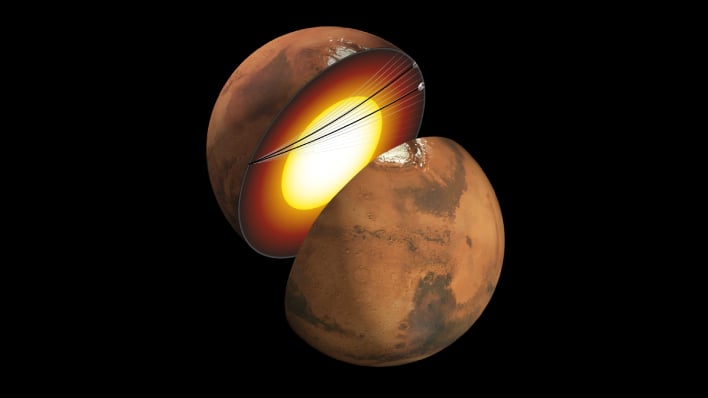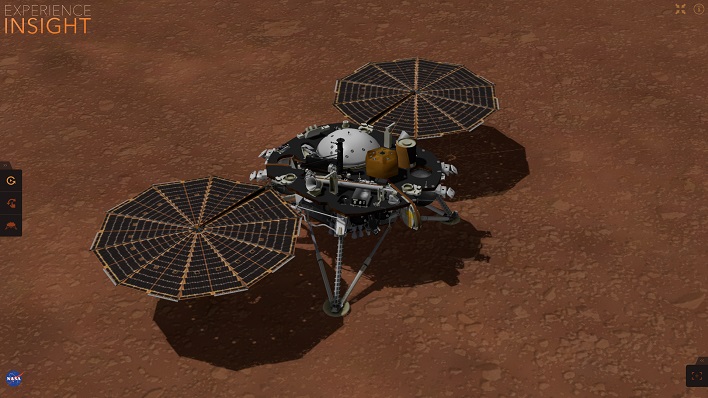Researchers Make A Seismic Martian Discovery That Shakes Mars To Its Core

The massive quakes were outlined in a new research paper published earlier this week in the Proceeding of the National Academies of Sciences (PNAS). One of the quakes occurred on August 25, 2021, while the second happened on September 18, 2021. These ground-shaking quakes were also the first to be identified by the InSight team on the opposite side of the planet from the lander, called farside quakes.
The international team, which included University of Maryland (UMA) seismologists, was able to use the seismic data collected from the InSight lander to directly measure the properties of Mars' core. The data showed a completely liquid iron-alloy core with high percentages of sulfur and oxygen, according to a press release by the University of Maryland.

"In 1906, scientists first discovered the Earth's core by observing how seismic waves from earthquakes were affected by traveling through it," explained UMD Associate Professor of Geology Vedran Lekic. "More than a hundred years later, we're applying our knowledge of seismic waves to Mars. With InSight, we're finally discovering what's at the center of Mars and what makes Mars so similar yet distinct from Mars."
The team utilized two distant seismic events on the Red Planet, one caused by a marsquake and the other by a large impact. The team was able to compare the time it took each wave to travel through Mars compared to waves that stayed in the mantle, and then combine the information with other seismic and geophysical measurements, in order to estimate the density and compressibility of the material the waves traveled through. The results indicated that Mars more than likely has a completely liquid core, unlike Earth which has a combination of a liquid outer core and a solid inner core.
"You can think of it this way; the properties of a planet's core can serve as a summary about how the planet formed and how it evolved dynamically over time. The end result of the formation and evolution processes can be either the generation or absence of life-sustaining conditions," remarked UMD Associate Professor of Geology Nicholas Schmerr. "The uniqueness of Earth's core allows it to generate a magnetic field that protects us from solar winds, allowing us to keep water. Mars' core does not generate this protective shield, and so the planet's surface conditions are hostile to life."
Lekic points out that even though the InSight mission ended in December 2022, researchers are still scouring the data that was collected in hopes of finding more valuable information about the Red Planet.

